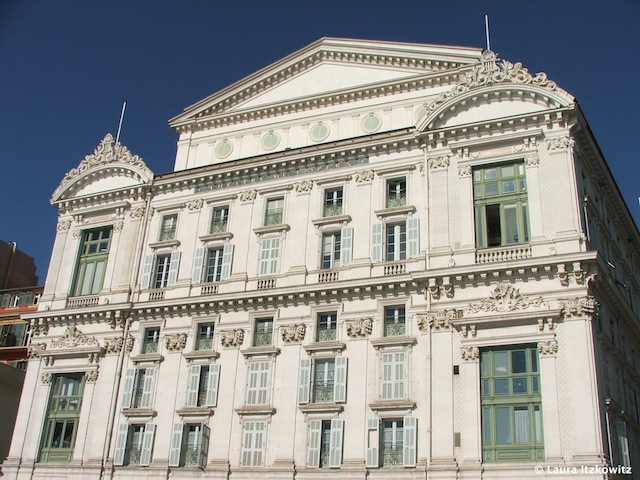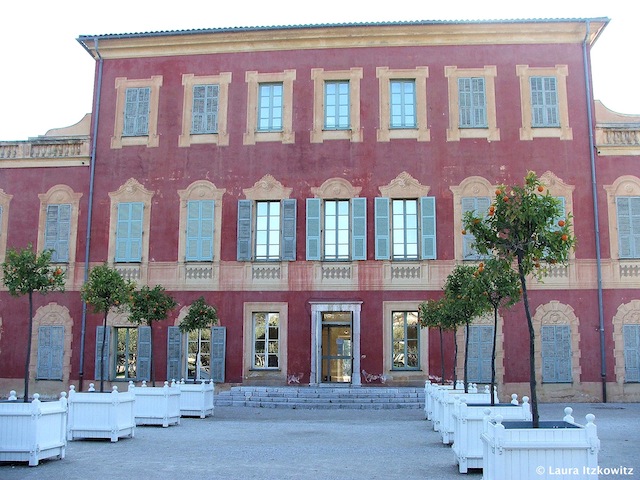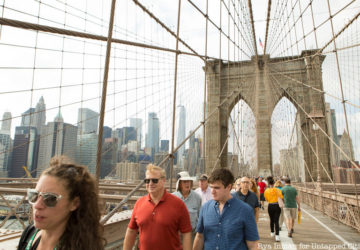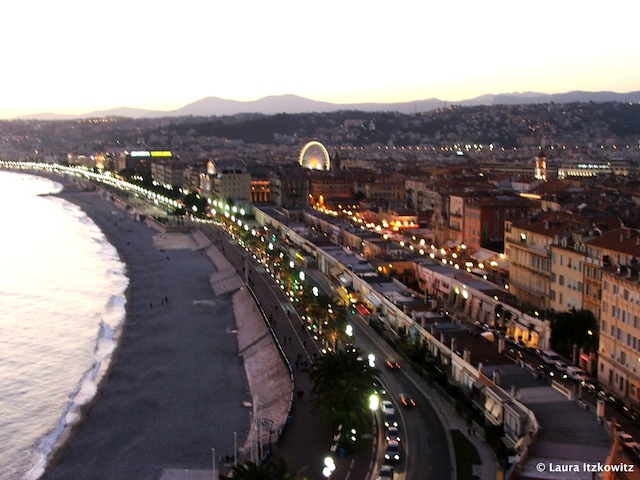There’s something about the light in Nice that makes blues seem bluer. At the height of the afternoon, flecks of light dance on the waves, and the sky appears cobalt blue against the pastel buildings. When the sun begins to set, it casts a rosy glow over this gem on the coast. Compared to Paris, which seems gray and muted during the winter, Nice retains some warmth with its Mediterranean color palate. It’s no wonder why artists have historically flocked here during the colder months.

Henri Matisse first came to Nice in 1916, when his doctor sent him to the nearby town of Menton to recover from bronchitis. Though he was hesitant to make a definitive move south, he would spend the winters in Nice, where his paintings show the vibrant tones he’s so well known for. In his first decade in Nice, he painted many odalisques. This period has been categorized as a return to realism, in line with Ingres and Courbet, but it seems to me more like Post-Impressionism as characterized by Van Gogh. Like the Dutch Post-Impressionist master, Matisse used vivid colors and broad, textured brushstrokes to communicate his impressions of a scene.
In 1916-17, Matisse lived at the Hôtel Beau Rivage on the Promenade des Anglais, which was built in 1860 and also hosted the likes of F. Scott Fitzgerald, Nietzche and Chekov. In 1918, Matisse took a room at the Hôtel de la Mediterranée, which he kept for four years. Nice and the rest of the French Riviera was at its height of glory in the roaring ’20s, when intellectuals and celebrities like Fitzgerald, Edith Piaf, and Josephine Baker lit up the hotels and casinos of the coast.
Matisse loved the theatrical decor of the Hôtel de la Mediterranée, which he immortalized in his painting Intérieur à la boîte de violon, because everything looked “fake, absurd, surprising, delicious”. He used to paint nude models in the old Rococo salon. He was terribly disappointed when the hotel was demolished. Matisse’s paintings from this period remain distinct from that of his contemporaries because instead of painting nature like the Impressionists, Matisse devoted his attention to interiors. His vivid use of colors likens him to Fauvists like Vlaminck, but his style is truly his own.
In the 1940s, Matisse moved away from realism altogether, and towards abstraction. From the ’40s until his death in 1954, he created a series of collages with repeating shapes and patterns in color blocks. He designed the stained glass windows in the rosary chapel in Vence, another coastal village. Many of these works can be seen at the Musée Matisse, along with a collection of his paintings, drawings and sculptures. In addition to the permanent collection, the museum hosts temporary exhibitions related to or inspired by Matisse.

Though many of the places Matisse used to frequent have either been demolished or renovated, you can still see remnants of Nice’s Art Deco history along the Promenade des Anglais, in places such as Hotel Negresco, the Excelsior Regina Palace, where Matisse also lived for a while (though it’s a private apartment building, so you’ll have to admire it from the exterior only), and the Musée Matisse. Perhaps the best way to understand Matisse’s inspiration is to stroll through the old city center from the Promenade des Anglais, past the Opera, through the Cours Salaya open air market, and up to Cimiez, the area with Ancient Roman ruins and incredible views of the Mediterranean. For a stronger picture of the roaring ’20s, take a short bus ride to Monaco to visit the famous Casino of Monte-Carlo.
Get in touch with the author @lauraitzkowitz






